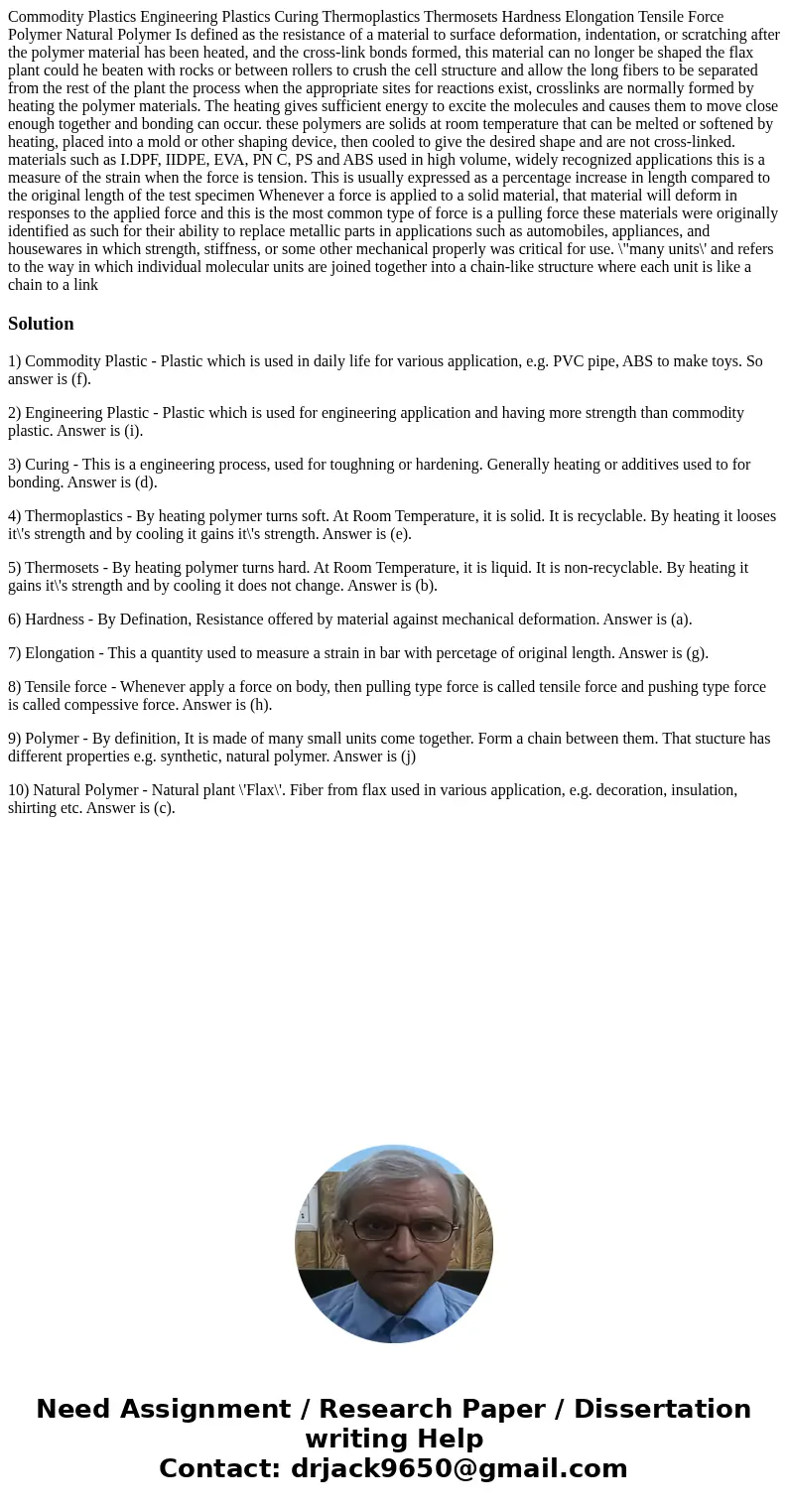Commodity Plastics Engineering Plastics Curing Thermoplastics Thermosets Hardness Elongation Tensile Force Polymer Natural Polymer Is defined as the resistance of a material to surface deformation, indentation, or scratching after the polymer material has been heated, and the cross-link bonds formed, this material can no longer be shaped the flax plant could he beaten with rocks or between rollers to crush the cell structure and allow the long fibers to be separated from the rest of the plant the process when the appropriate sites for reactions exist, crosslinks are normally formed by heating the polymer materials. The heating gives sufficient energy to excite the molecules and causes them to move close enough together and bonding can occur. these polymers are solids at room temperature that can be melted or softened by heating, placed into a mold or other shaping device, then cooled to give the desired shape and are not cross-linked. materials such as I.DPF, IIDPE, EVA, PN C, PS and ABS used in high volume, widely recognized applications this is a measure of the strain when the force is tension. This is usually expressed as a percentage increase in length compared to the original length of the test specimen Whenever a force is applied to a solid material, that material will deform in responses to the applied force and this is the most common type of force is a pulling force these materials were originally identified as such for their ability to replace metallic parts in applications such as automobiles, appliances, and housewares in which strength, stiffness, or some other mechanical properly was critical for use. \"many units\' and refers to the way in which individual molecular units are joined together into a chain-like structure where each unit is like a chain to a link
1) Commodity Plastic - Plastic which is used in daily life for various application, e.g. PVC pipe, ABS to make toys. So answer is (f).
2) Engineering Plastic - Plastic which is used for engineering application and having more strength than commodity plastic. Answer is (i).
3) Curing - This is a engineering process, used for toughning or hardening. Generally heating or additives used to for bonding. Answer is (d).
4) Thermoplastics - By heating polymer turns soft. At Room Temperature, it is solid. It is recyclable. By heating it looses it\'s strength and by cooling it gains it\'s strength. Answer is (e).
5) Thermosets - By heating polymer turns hard. At Room Temperature, it is liquid. It is non-recyclable. By heating it gains it\'s strength and by cooling it does not change. Answer is (b).
6) Hardness - By Defination, Resistance offered by material against mechanical deformation. Answer is (a).
7) Elongation - This a quantity used to measure a strain in bar with percetage of original length. Answer is (g).
8) Tensile force - Whenever apply a force on body, then pulling type force is called tensile force and pushing type force is called compessive force. Answer is (h).
9) Polymer - By definition, It is made of many small units come together. Form a chain between them. That stucture has different properties e.g. synthetic, natural polymer. Answer is (j)
10) Natural Polymer - Natural plant \'Flax\'. Fiber from flax used in various application, e.g. decoration, insulation, shirting etc. Answer is (c).

 Homework Sourse
Homework Sourse